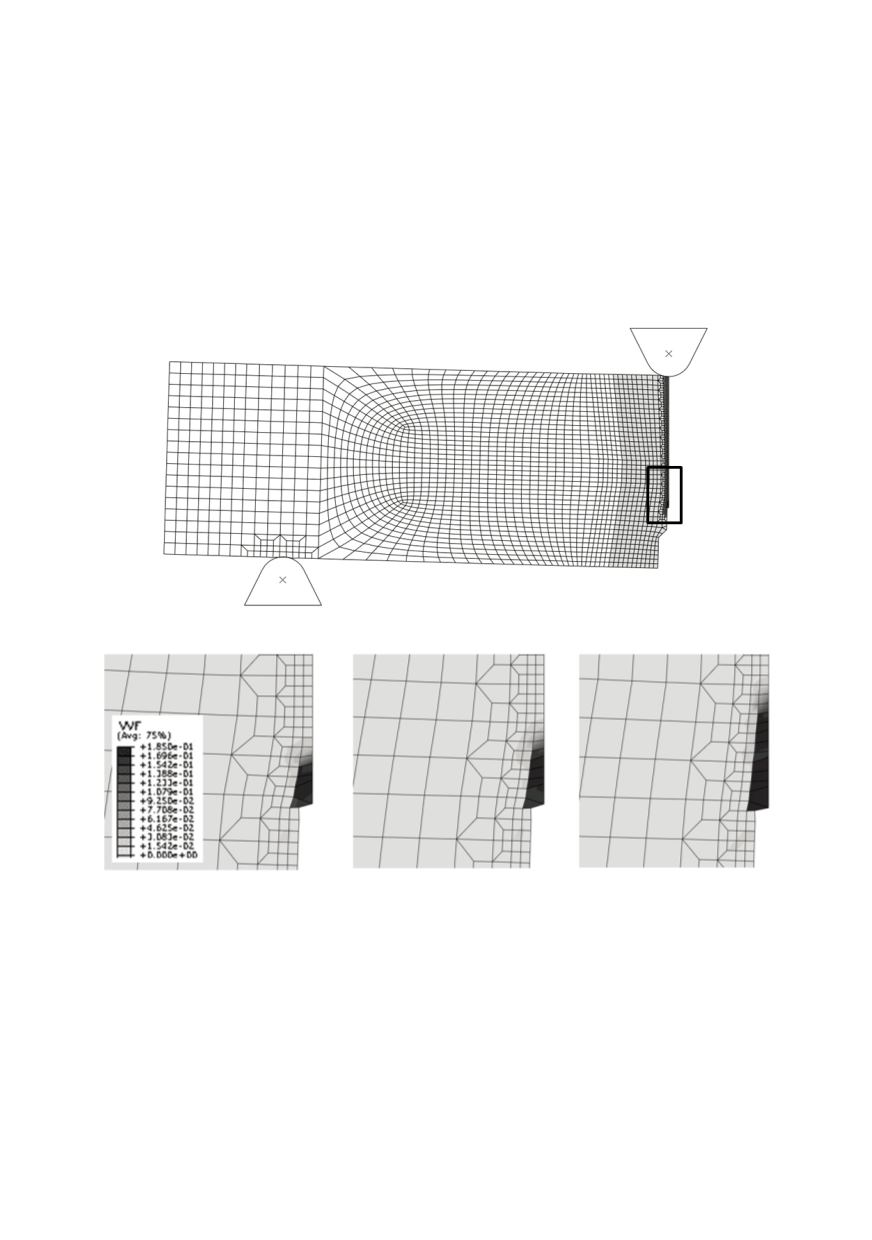

80
criterion and the CGM. First of all, it can be seen that the load-carrying capacity of the
material is overestimated if damage due to the voids is not taken into account (von Mises
criterion). These results can be improved using the node release technique, as explained,
but in this analysis it is chosen to model the crack growth by development of damage in
the ligament, using the CGM. It is shown that this procedure can give appropriate results,
and predict the weakening of the material caused by the nucleation, growth and coalesc-
ence of voids during the process of ductile fracture. Very good agreement with experi-
mental data is achieved for 6 and 12 mm wide joints, while certain differences exist in
case of the widest joint (18 mm), where the estimated values of force are larger, but with
correct trend that reflects the loss of load-carrying capacity of the material.
Figure 10: Deformed FE mesh of one half of SENB specimen, joint width 12 mm
(a)
(b)
(c)
Figure 11: Detail of deformed FE mesh in the ligament in front of the crack tip,
joint width 6 mm (a), 12 mm (b) and 18 mm (c)
The influence of the secondary voids formed around the Fe
3
C particles on the crack
growth initiation is also analysed using the CGM. Volume fraction of these particles in
the weld metal,
f
N
= 0.002257, is determined using the lever rule /41/. Results obtained
using the approach of Chu and Needleman /27/ are shown in Fig. 15. The adopted values
of
ε
N
and
s
N
are 0.3 and 0.1, respectively. It is concluded that secondary voids in the
analysed weld metal do not contribute to the decrease of the load-carrying capacity. Such
behaviour is not a surprise, having in mind the low contents of carbon, and therefore also
Fe
3
C particles.


















